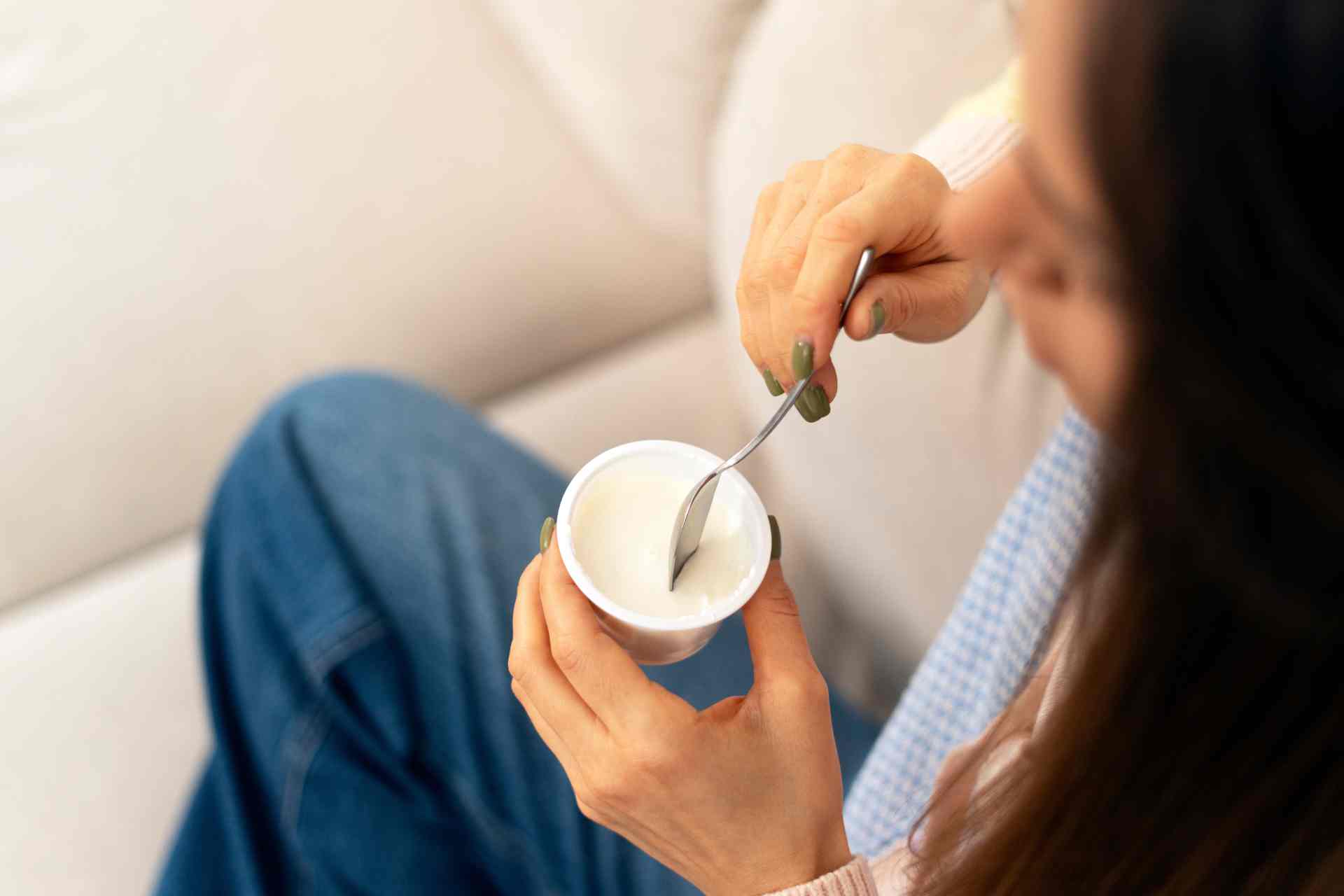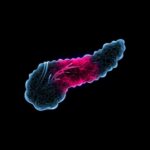A study recently published by Huynh et al. in Scientific Reports shed light on the mechanisms of calcium-mediated biofilm formation in Lactobacillus acidophilus ATCC 4356 and Lactiplantibacillus plantarum ATCC 14917. Calcium ions (Ca2+) showed to be important not just as nutrients for bacteria growth, but also for their ability to facilitate cell-cell interactions and possibly the colonization in the gut microbiota for specific species, like L. acidophilus ATCC 4356.
Several studies show that changes in dietary calcium levels influence the composition of the gut microbiota, suggesting variable calcium requirements and roles in the gastrointestinal ecosystem. Moreover, calcium seems to promote the viability of intestinal Lactobacillaceae species. However, this mechanism is still to clarify.
In the study of Huynh et al., the researchers aimed at evaluating the effects of different concentrations of Ca2+ (0-25mM) on the growth of those two species in various media – rich (MRS) and minimal media (CDM) and minimal media with mucin (mCDM), a protein essential for adhesion and known to bind metal ions.
Calcium promotes growth of L. Acidophilus and L. Plantarum
The results of the study show that:
- The growth of both species was promoted by the addition of Ca2+, being stronger at lower concentrations for L. acidophilus ATCC 4356.
- Mucin showed to impact less than Ca2+ on growth, independently on the quantity. In particular, L. acidophilus ATCC 4356 exhibited a similar growth in all Ca2+ conditions and media. Instead, for L. plantarum ATCC 14917, calcium induces the growth in MRS subcultures and, less, in CDM subcultures, but not in the mucin subcultures.
- Mucin seems to act as a significant source of calcium in the mCDM medium, potentially allowing cells to accumulate enough Ca2+ to minimize the impact of its changes on cell growth in CDM.
Calcium’s impact on biofilm formation of L. Acidophilus ATCC 4356 and L. Plantarum ATCC 14917
Along with the cells’ growth, the researchers assessed the biofilm formation under the different calcium concentrations.
- An increase of Ca2+ induced biofilm formation at 24 h and 48 h with the most significant effects from 5 to 25 mM in most subcultures.
- Low Ca2+ (5–10 mM) promoted biofilm formation of L. plantarum ATCC 14917 in all subcultures at 24 h while at 48 h was lowest at 25 mM Ca2+. On the contrary, the total biofilm formation of L. acidophilus ATCC 4356 was highest at 25 mM.
- At 24 h the cell counts for L. acidophilus ATCC 4356 were slightly higher at 10 and 25 mM Ca2+ compared to 0 mM. Instead, for L. plantarum ATCC 14917 after 24 hours the cell viabilities at 0 mM Ca2+ were highest among the different conditions.
- After 48 h, the biofilms formed with 25 mM Ca2+ declined significantly and the viability of biofilms formed with 0 and 10 mM Ca2+ slightly declined compared to biofilms at 24 h for L. acidophilus ATCC 4356.
Along with the calcium effects, the impact of magnesium ions (0-25mM) on the growth and biofilm formation was investigated. Increasing concentrations showed no effect on biofilm formation of L. acidophilus ATCC 4356 while its supplementation up to 1 mM modestly enhanced the growth of MRS and CDM subcultures and significantly enhanced the growth of mCDM subcultures for both species showing not specificity as for the calcium ions.
Effects of extracellular chelator on growth and biofilm formation in Lactobacillaceae
Calcium ions facilitates aggregation and biofilm formation by binding to cell surface macromolecules. Here, they investigated the effect of EGTA, a synthetic calcium chelator, on biofilm formation in the presence and absence of Ca2+ for Lactobacillaceae species. In particular, EGTA was added to the growth medium to evaluate the bacteria’s ability to compete with the chelator for Ca2+ ions showing that L. plantarum ATCC 14917 has lower Ca2+ requirements in Ca2+-limited medium and/or can more efficiently take up calcium needed for growth than L. acidophilus ATCC 4356. Indeed:
- Despite high concentrations of calcium, EGTA did not induce biofilm formation of L. acidophilus ATCC 4356. However, it was able to recover its growth kinetics in the presence of excess chelator and at 10 and 25 mM Ca2+.
- EGTA had less impact on L. plantarum ATCC 14917 than L. acidophilus ATCC 4356, but addition of EGTA to 10 and 25 mM Ca2+ resulted in a modest increase in biofilm mass for L. plantarum ATCC 14917.
- When no calcium was added, L. acidophilus ATCC 4356 could still grow in the presence of 50 mM EGTA, not with 80 and 100 mM EGTA. EGTA impacted negatively also the growth of L. plantarum ATCC 14917, although it was not entirely suppressed.
In summary, the biofilm cell counts were reduced for all conditions with added EGTA.
EGTA showed to be more detrimental to the viability of L. acidophilus ATCC 4356 and biofilm cells than L. plantarum ATCC 14917 cells, possibly due to the reduction of the Ca2+ available for interacting with the L. acidophilus ATCC 4356 cell surface.
Microscopy analysis on Lactobacillaceae biofilm formation
Then, the effect of Ca2+ and EGTA on Lactobacillaceae biofilm formation was assessed through microscopy. The results are as follows.
For L. acidophilus ATCC 4356 :
- the cell-cell aggregation increased with higher Ca2+ concentrations.
- the cells muted from filamentous-like without Ca2+ to bacilloid rods with 25 mM Ca2+. This transformation was reversed by the addition of EGTA.
For L. plantarum ATCC 14917, instead:
- cell density was low for 0 and 25 mM Ca2+, but increased at 10 mM Ca2+.
- The inclusion of EGTA chelator did not influence the apparent cell-cell aggregation (0 and 10 mM Ca2+) nor the cell density (25 mM Ca2+).
- No apparent changes also in morphology, which remain in the form of bacilloid rods under all conditions.
Calcium binding affinity to L. acidophilus ATCC 4356 through biofilm quantitation
Ca2+ seems to facilitate L. acidophilus ATCC 4356 biofilm formation via an extracellular mechanism. To assess that, the biofilm formation was quantified at 48 h in the presence of increasing Ca2+ concentrations. Ca2+ binding affinities for proteins vary widely but tend to be stronger for cytosolic intracellular proteins and weaker for extracellular proteins.
Further work is needed to determine the specific Ca2+-binding site(s) involved in biofilm formation.
Bioinformatic analysis of calcium-binding extracellular proteins in Lactobacillaceae
By using Foldseek analyses for the bioinformatic investigation of extracellular and known or predicted calcium-binding proteins in L. acidophilus and L. plantarum, this study found that L. acidophilus has several potential Ca2+-binding surface proteins compared to L. plantarum. These extracellular proteins are likely to have structural roles in the observed Ca2+-induced biofilm formation of L. acidophilus ATCC 4356.
This study highlights the distinct and complementary functions of calcium ions in Lactobacillaceae species, L. acidophilus ATCC 4356 and L. plantarum ATCC 14917. Indeed, Ca²⁺ serves as a vital intracellular nutrient, essential for cellular processes and metabolic functions but it also enhances cell-cell interactions, facilitating communication and cooperation among bacterial cells. These dual roles are crucial for the survival and persistence of Lactobacillaceae within the gastrointestinal tract. A deeper understanding of the roles of Ca²⁺ and other metal ions in gut bacteria is essential for understanding how dietary components shape the microbiota and, consequently, impact human health and disease.









